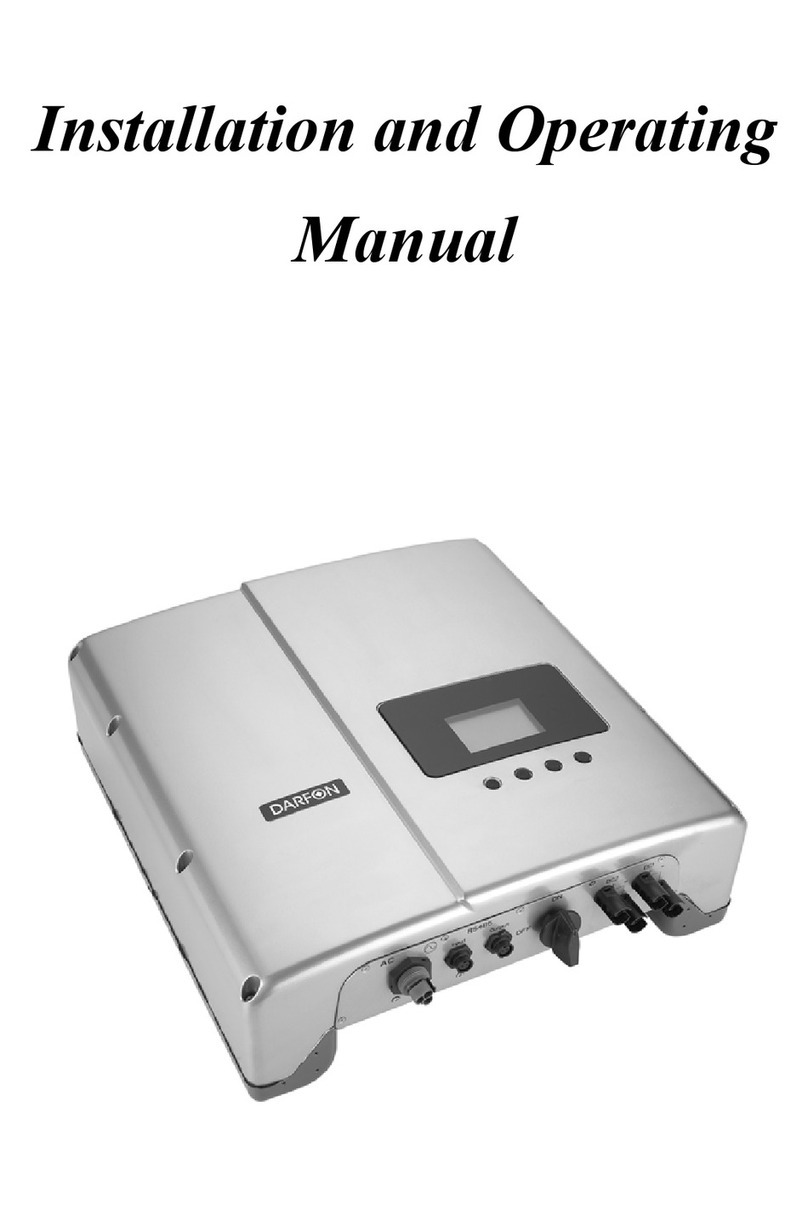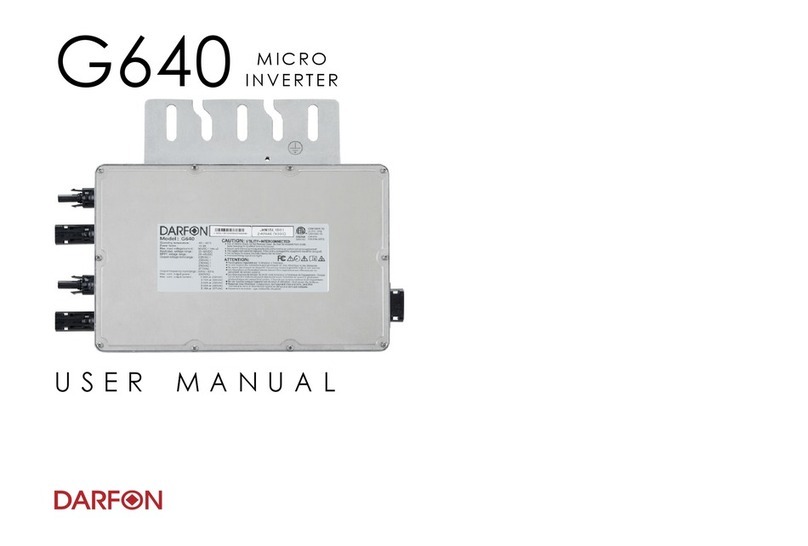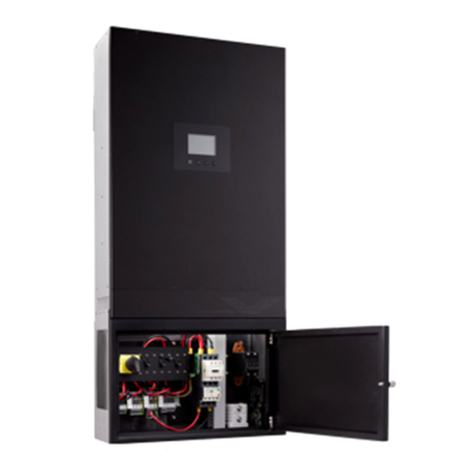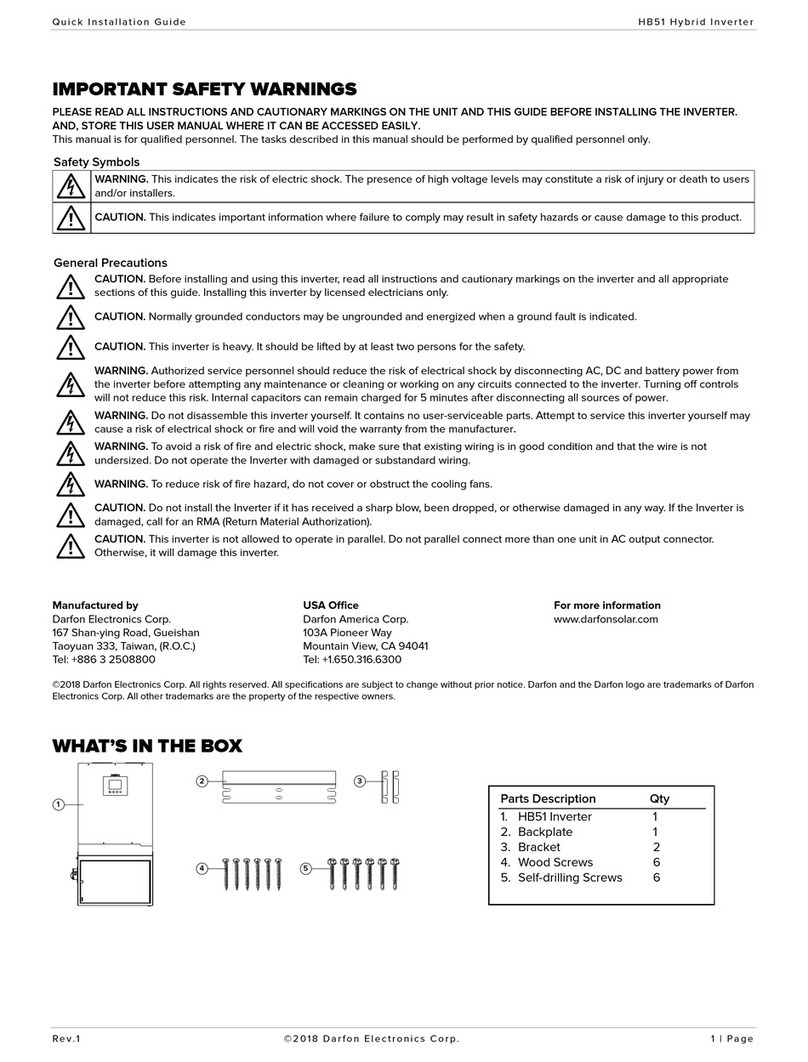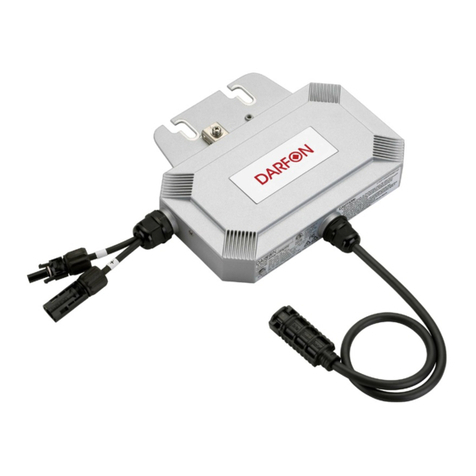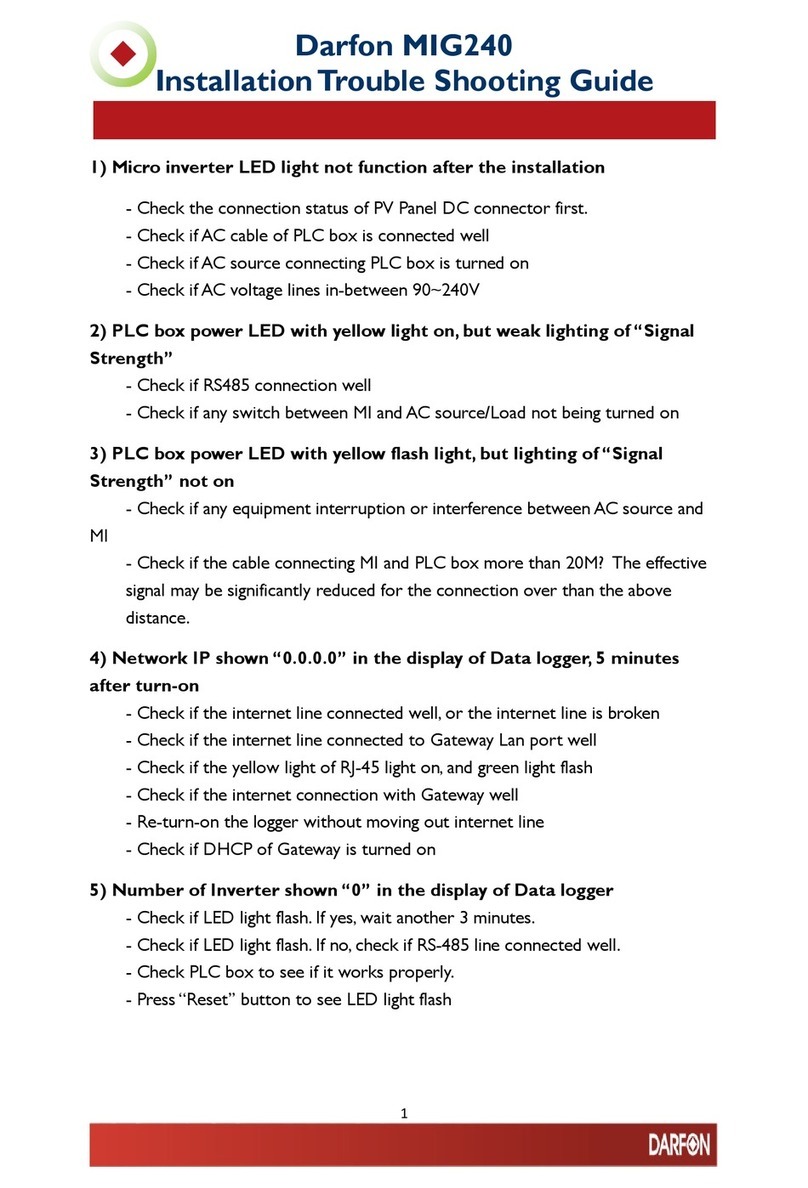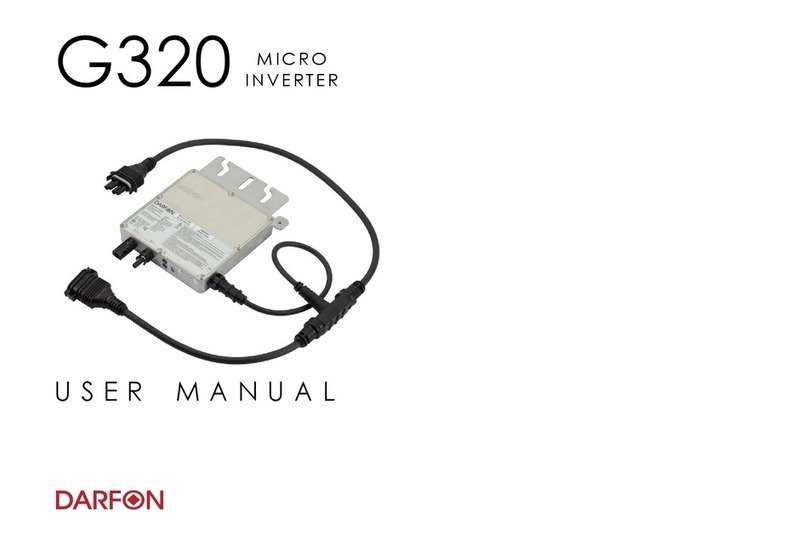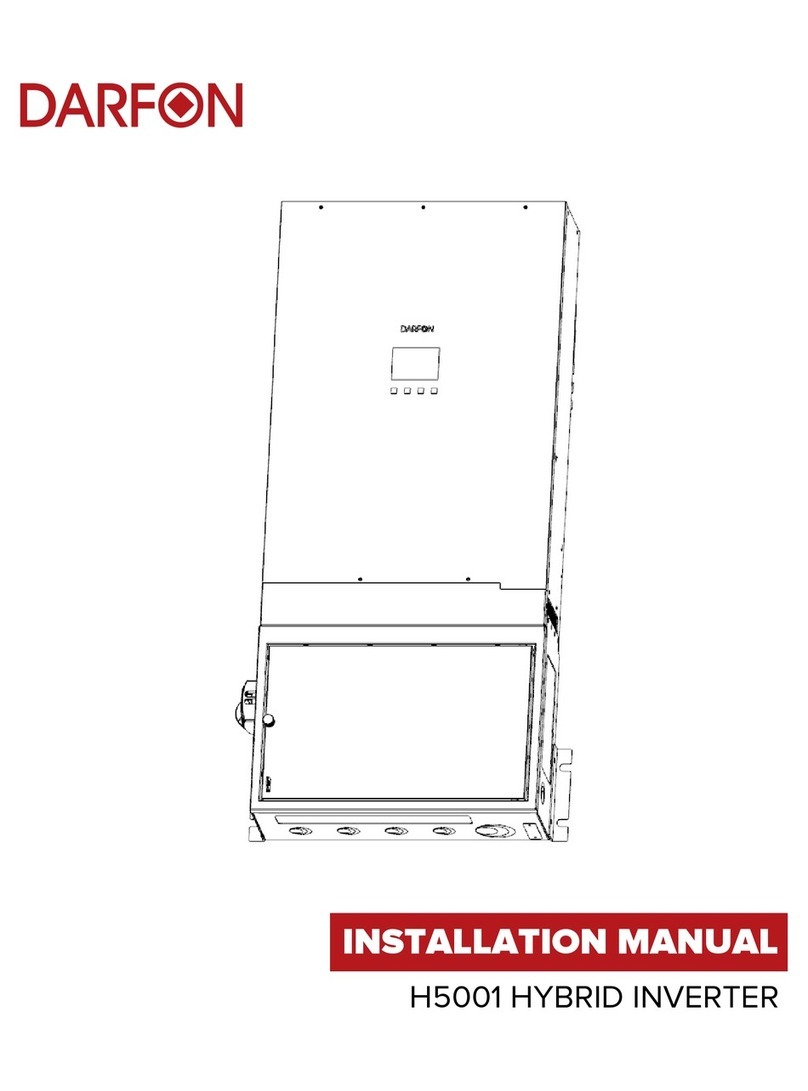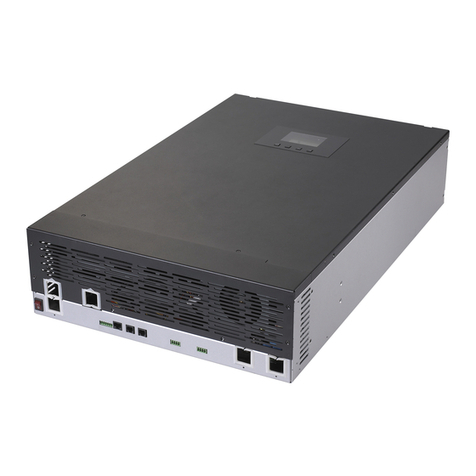
Rev. 04 ©2014 Darfon America Corp. 3| Page
MIG300 MICRO INVERTER INSTALLATION MANUAL
IMPORTANT SAFETY INSTRUCTIONS
PLEASE READ THESE INSTRUCTIONS BEFORE INSTALLING ANY DARFON PRODUCTS OR DEVICES &
KEEP FOR FUTURE REFERENCE.
This manual contains important instructions for the installation and maintenance of Darfon MIG300 micro
inverters. Before installing, please read these safety instructions carefully. Take special care to follow the
warnings indicated on the unit itself as well as the safety instructions listed below.
Safety Symbols
To reduce the risk of injury and to ensure the continued safe operation of this product, the following safety
instructions and warnings are marked in this manual.
WARNING
This indicates the risk of electric shock. The presence of high voltage
levels may constitute a risk of injury or death to users and/or installers.
CAUTION
This indicates important information where failure to comply may
result in safety hazards or cause damage to this product.
Safety Instructions
• Read all instructions and cautionary marks in the manual carefully before starting the installation.
• Do not attempt to repair this product; it does not contain user-serviceable parts. Repairs and internal
servicing should only be performed by Darfon authorized service personnel.
• Do not tamper with or open this product. Opening this product may result in electric shock.
• Perform all electrical installations in accordance with all applicable local electrical codes and the
National Electrical Code (NEC), ANSI/NFPA 70.
• Only qualified electrical personnel should perform the electrical installation and wiring of this product.
• Be aware that even without an external voltage source connected, the MIG300 micro inverter may
contain high voltages and there is a risk of electrical shock.
• Connect the Darfon micro inverter to the utility grid only after receiving prior approval from the
electrical utility company.
• The temperature of the heat sinks outside of the device can reach over 85°C in normal operation. To
reduce risk of burns, use caution when working with micro inverters.
• Do not disconnect the DC power source from the Darfon micro inverter without first disconnecting the
AC power source. Both AC and DC power sources must be disconnected before servicing. Be aware
that DC power/voltage is generated when the photovoltaic array is exposed to light.
• Switch o the circuit breakers before installation and wirings.
• For the safety of installation, remove all conductive jewelry or equipment during the installation or
service of the device parts, connector and/or wiring.
• Do not stand on a wet location while doing installation and wirings. Enclose the outer covering well
before switch on the circuit breakers.
• MIG300 inverters should be installed as instructed in this manual. Failure to comply with these
precautions or with specific warnings elsewhere in this manual violates safety standards of design,
manufacture, and intended use of the device. The manufacturer assumes no liability for the customer’s
failure to comply with these requirements.
• When a GFDI fault (Ground fault) occurs, the LED will flash alternating between orange and red. Please
refer to page 15 for more introductions.
